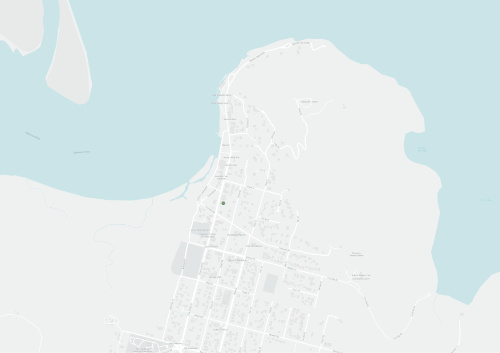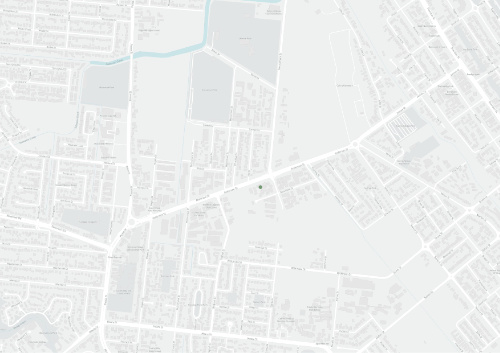Plan Explorer
Filter by:
Region
Topic
Sector
Other
Results
Aust-Pac Capital Pty Ltd - initial advice statement
OperationalUtah Development Company (UDC), BHP Australia and Bathurst Coal and Power Limited (BPCL) conducted extensive geotechnical investigations across the resource (then known as EPC 463) in the 1970s, 1980s and the 1990s.
Great Barrier Reef report card 2012 and 2013
Current InformationalThe Great Barrier Reef report card is part of the Reef Quality Water Protection Plan and measures the progress from 2009 to 2013 regarding the Reef Water Quality Protection plan 2009 targets.
Reef Water Quality Protection Plan 2009
Superceded StrategicThe intention of the Reef Water Quality Protection Plan 2009 was to ensure that the water quality of the Great Barrier Reef Lagoon was improved by addressing non-point source pollution caused by large-scale land use along the eastern coastline.
Normanby Catchments water quality management plan - draft
StrategicThis is the final draft for the Normanby Catchment Water Quality Management Plan and was released for consultation and review on the 1st of September 2013.
Laura Rangers weed and fire plan
Current CommunityThis poster outlines the objectives, location, strategy, planned outcomes, and implementation of the Laura Ranger's Weed Management Strategy.
Cape York Peninsula Land Use Strategy: Land Use Program: Aspects of Commercial and Non-Commercial Fisheries of Cape York Peninsula
CYPLUSCYPLUS commissioned WBM Oceanics Australia to prepare this report which describes the level of use of commerical and non-commerical fisheries, factors affecing the environmental condition of said fisheries and habitats, and management issues relating to each of the fisheries and habitats in 1994.
Recovery plan for the stream-dwelling rainforest frogs of the wet tropics biogeographic region of north-east Queensland 2000–2004
Threatened speciesThis plan was released in 2001 by the Natural Heritage Trust and Queensland Parks and Wildlife Service with the ultimate goal of improving the conservation status of particular species of stream dwelling rainforest frogs within the Wet Tropics.
Springvale Erosion Management Plan
CurrentIn 2016 the Queensland Government purchased Springvale Station, a 56,295ha property in Far North Queensland (Figure 1).
Draft Cape York Peninsula Natural Resource Management Plan (2005)
Obsolete Government PolicyThe aim of the Plan is to ensure that natural resources are well managed, and protected where required, for the benefit of us all and future generations. The Plan aims as far as possible to be consistent with other regional strategies.
Brumby Hollow Property Pest Management Plan
Obsolete OperationalThis plan outlines the sustainable land management practices for Brumby Hollow over 4 years. Objectives are:
Bunata Property Pest Management Plan
Obsolete OperationalThis plan aims to protect the economy and environment of Bunata from the adverse impacts of weeds and feral animals.The objectives for weed and feral animal management in Bunata over the next 4 years are:
Butchers Hill Station Pest Management Plan
Obsolete OperationalTo manage the land of Butchers Hill Station, in a sustainable way, by controlling weeds and pest animals on the property, and ensuring it’s economic and environmental viability continues into the future.
Normanby Catchment Water Quality Management Plan
Current StrategicThe Normanby Catchment Water Quality Management Plan is written in accordance
with the Australian Government’s Framework for Marine and Estuarine Water Quality
Laura Ranger Country Plan and Poster
Current OperationalPoster outlining a set of guiding priniciples on which Laura Rangers will operate on their country.
Laura-Normanby Catchment Management Strategy
Current StrategicThe Laura-Normanby Catchment Area covers a vast and relatively undeveloped area with extensive riverine and wetland systems, one of Queensland's largest conservation areas (Lakefield National Park), numerous sacred aboriginal sites, good cattle country and rich agricultural lands.
Cape York Peninsula Regional Biosecurity Strategy
Current StrategicCape York Natural Resource Management (Cape York NRM), Cook Shire Council (CSC), Weipa Town Authority, Wujal Wujal, Hopevale, Lockhart, Mapoon, Napranum, Aurukun, Pormpuraaw and Kowanyama Aboriginal Shire Councils and the Northern Peninsula Area Regional Council (NPARC) have collaboratively devel
Western Cape Communities Trust investment strategy 2011-2022
This investment strategy released in 2011 presents an in-depth explanation of the funding allocation for the Western Cape Communities Trust, established by the Western Cape Communities Co-existence Agreement for a number of purposes such as natural resource management and funding allocation.
Western Cape Chamber of Commerce strategic plan 2010-2012
Obsolete CommunityThis strategic plan was developed following a review of the 2007 Western Chamber of Commerce Strategic Plan during a workshop in Weipa on the 20th of November 2009.
Western Cape Communities Trust & Western Cape Communities Coordinating Committee strategic plan 2009-2012
Obsolete StrategicThis document was released by the Western Cape Communities Trust (WCCT) and Western Cape Communities Coordinating Committee (WCCCC) as a plan to deliver on 4 key objectives within the mining lease area surrounding Weipa.
Port of Weipa environmental management plan
Current StrategicThis environmental management plan was released by the North Queensland Bulk Ports Corporation as part of their environmental program with the objective of acting as a reference document for all then-current and potential users of the Weipa port.
Pormpuraaw Aboriginal Lands and Waters fire management plan
Current StrategicThe Pormpuraaw fire management plan was created by the Pormpuraaw Land and Sea Management group on behalf of the Thaayorre and Mungkan Traditional Owners and the Pormpuraaw Aboriginal Shire Council in conjunction with Cape York Sustainable Futures and Firescape Science, to provide various strateg
Recently added
Kaanju Homelands Wenlock & Pascoe Rivers Cape York Peninsula Indigenous Protected Area Management Plan
Obsolete OperationalPrimarily, this Plan is for Kaanju people living on homelands, but it also serves as a guide for external land and resource management, conservation, service delivery, economic development and community development organisations and agencies, both government and non-government, engaged with Chuul
Julery Pastoral Property Pest Management Plan
Obsolete OperationalThe plan represents a workable pest management program which identifies, combats and eradicates declared environmental pest plants and feral animals for Julery Pastoral.
Jim's Joint Property Pest Management Plan
Obsolete OperationalThe plan has been prepared to protect the economy and environment of “Jim’s Joint” from the adverse impacts of weeds and feral animals.
Normanby Catchment Water Quality Management Plan
Current StrategicThe Normanby Catchment Water Quality Management Plan is written in accordance
with the Australian Government’s Framework for Marine and Estuarine Water Quality
Cape York Peninsula Pest Management Strategy
Obsolete StrategicThe Cape York Peninsula Pest Management Strategy (CYPPMS) is a broad over-arching document that establishes a Cape-wide planning framework for integrated pest management by government, community, industry and individuals.
Queensland Pest Animal Strategies - Feral Pigs (Sus scrofa)
Obsolete Government PolicyThe overall vision of the feral pig management strategy is to use best practice
management to minimise the impact of feral pigs on the environment, economy and
health of Queensland.
The strategy is intended to achieve five outcomes:
Strategy for Delivering Water Resource Management in Cape York
Current Government PolicyThis strategy identifies short term and long term actions that will enhance opportunities for future access to water resources for agriculture, tourism and other industries in a responsible way.
Cape York Regional Plan
Current Government PolicyPublished by the Department of State Development, Infrastructure and Planning. The plan identifies and interprets the state’s interests in land use planning and development, as described in the State Planning Policy, for the Cape York region.
Cape York Peninsula Feral Pig Management Plan 2006-2009
Obsolete OperationalThe Cape York Peninsula (CYP) Pest Management Strategy provides a planning framework for coordinated pest management between research bodies, agencies, communities, industries, individuals and the government.
Coastal Management Plan
Current Government PolicyThe Coastal Management Plan is prepared under the Coastal Protection and Management Act 1995 (Coastal Act) to describe how the coastal zone of Queensland is to be managed.

